Drone Design Trends and Best Practices
Drone applications are expanding and maturing, leading to some noteworthy drone designs.
June 23, 2023
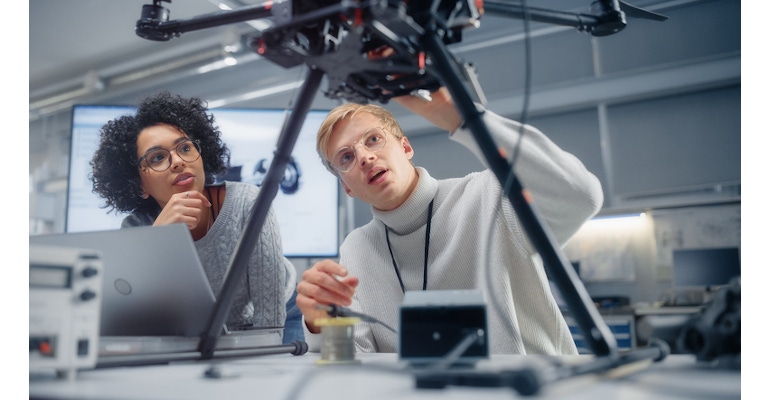
In the United States, the drone market grew to $11.1 billion in 2022, expected to swell to $82.9 billion by 2032, according to Fact.MR. Globally, it's projected to hit $279 billion that year, a 25 percent compound annual growth rate.
That astounding success comes thanks to the explosion of drone use on multiple fronts. On the industrial side, drones are used to survey everything from construction to cattle, with research applications swelling as technologies increase and costs decrease.
Meanwhile, recreational drone use on the consumer side is following a similarly skyward trajectory. Easy-to-fly, pocket-sized drones with advanced auto-following features and 4K video capture are increasingly de rigueur for serious travelers and adventure hounds.
Finally, military drones continue to grow in sophistication and specialization as global battlefields demand more advanced solutions. Military applications make up roughly half of the U.S. drone market, according to Fact.MR. Commercial use takes up 34.6 percent, while consumer/civil drones cover the remaining 15.6 percent of the market.
As these varied drone applications mature, so, too, have patterns and design trends grown and solidified. Let's dig deeper on that topic.
Drone Definitions and Categories
First, a little clarification of terms. The name "unmanned aerial vehicle" or UAV is the formal term that many have used traditionally and continue to use for this class of device. However, as outlined comprehensively in a 2022 volume of the journal, Drone Systems and Applications, that term presents some problems.
The inclusion of a gendered word, "unmanned," is one strike against it, but alternative terms like "uncrewed" or "unoccupied" present other undesirable complications and implications. The journal asserts that the term "drone" is not only the most widely used but also the most accurate, and so that is the term we'll use here throughout.
Additionally, while there are numerous terrestrial and underwater drones in use today, by far the majority of development in the drone industry relates to aerial craft, so that will be our primary focus.
Within aerial drones, there are three primary categories.
Fixed-Wing Drones
The most basic and oldest form of drone, dating back to remotely piloted aircraft in WWI, is the fixed-wing drone. These drones use a shape similar to a traditional aircraft, allowing them to fly at higher speeds and longer ranges.
However, fixed-wing drones generally lack the ability to hover, are more difficult to fly, and require significant space to take off and land safely.
Single- and Multi-Rotor Drones
When most people think of a drone, they think of a modern, multi-rotor drone, often with four separate motors spinning four separate propellers.
However, single-rotor drones also exist, operating more like a traditional helicopter. Both offer vertical take-off and landing, or VTOL capability, meaning many can be launched directly out of the operator's hand. Additionally, the advanced flight control software in these drones makes them straightforward to pilot, also providing a stable platform for precise surveying or scanning.
But, this type of flight has higher energy demands, dictating shorter flight times and smaller payloads than a fixed-wing drone.
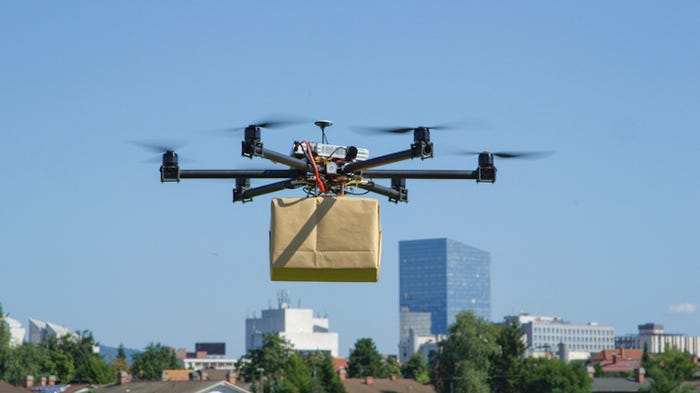
Hybrid Drones
This type of drone offers many of the benefits of both types of drone design. A hybrid drone offers VTOL capability for easy launch but can transition from hovering like a multi-rotor drone to horizontal, fixed-wing flight.
"You have all sorts of competing companies that have figured out how to make a fixed wing drone take off and land vertically, either by tilting the profile of the propellers upwards or downwards during takeoff and landing and then tilting them forward for flight," Dr. Dominique Chabot told us. He's lead scientist at droneMetrics, a remote sensing and analytics company, adjunct professor at Trent University, and editor-in-chief at the journal, Drone Systems and Applications.
These drones offer many of the benefits of both types of drones, but do not offer the same efficiencies or speeds of a fixed-wing drone nor the extreme stability of a multi-rotor.
Common Drone Applications
Agriculture
Smart agriculture is an increasingly vital aspect of modern farming, particularly when it comes to food and feedstock supply. Drones can check soil moisture levels, monitor plant health and production, deploy fertilizers and pesticides, and even scout for pests and other interlopers.
The trend here is generally towards multi-rotor drones, like the DJI AGRAS T40, which can carry up to 50 kg of payload for precision spraying or spreading, enough to cover 52.6 acres (21.3 hectares) per hour.
But not all ag applications require hoppers or sprayers. The ZenaDrone is a four-rotor machine specifically designed for the unique requirements of monitoring hemp farms. "Because the drone records videos and captures images of the hemp plantation, the farmers also were able to predict plant health and resolve plant problems before they got worse," ZenaDrone founder and CEO Dr. Shaun Passley told us last year.
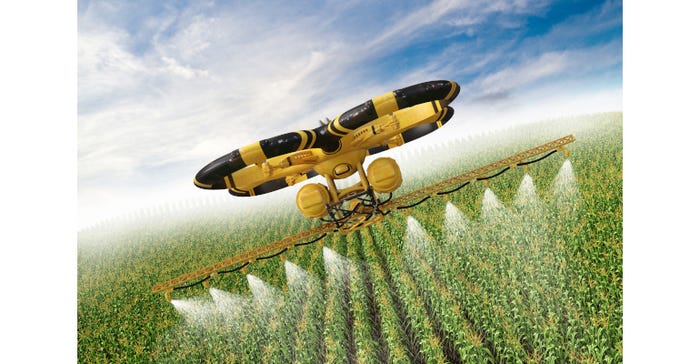
Delivery
While the COVID pandemic imparted new importance to package and food delivery globally, drone delivery was already well under development. "In some parts of the world, particularly in Africa, this is already being done in areas that are sparsely populated or hard to reach," Dr. Jeremy Laliberte told us. He's a professor in mechanical and aerospace engineering and associate chair for lab operations and research at Carlton University. He's also program director for the NSERC CREATE Uninhabited aircraft systems Training, Innovation and Leadership Initiative (UTILI).
But, this technology is slowly spreading. Drone delivery start-up Zipline received FAA authorization for testing in the U.S., completing 6,000 drone deliveries here last year.
The need for carrying large payloads often calls for fixed-wing aircraft for delivery applications. However, some companies, like Amazon's Prime Air, are developing custom, hybrid drones offering VTOL capability in addition to extended flight times.
Media
Drone use in media has exploded in recent years, with drones serving as advanced, stabilized platforms for carrying video and photographic equipment. The rise in drone journalism has enabled real-time updates from difficult to reach or even hazardous situations, like war zones, protests, and natural disasters.
The trend of drone use has captured Hollywood, too, with more and more films featuring drone shots, even from first-person-view, or FPV drones, a type of highly maneuverable multi-rotor design. 2022's Ambulance by Michael Bay featured an extensive FPV sequence.
Military
Military use makes up half of the global drone market, with applications ranging from long-range explosive payload delivery to up close and personal battlefield surveillance.
This breadth of application means drones of all types, from fixed-wing drones the size of fully crewed aircraft to the Black Hornet, a single-rotor drone little bigger than its namesake.
Scientific Research
Drones now play a crucial role in many areas of scientific research thanks in large part to the increased availability and reduced cost of commercial drones.
Drone types vary depending on application. "When you want to do larger scale mapping projects, oftentimes fixed wing is the way to go just because they have longer flight endurance and can cover more area in less time," Dominique Chabot told us, who has been using drones in research since 2007. "Whereas, when you want to do those very precise [projects], obviously multirotors can do things fixed wing drones can such as take off and land vertically, and they can also hover or fly really slowly if needed."
Propulsion Types
While larger drones, particularly for military use, tend to rely on internal-combustion engines for flight, smaller models for commercial or personal use generally rely on electric propulsion. Of those, DC brushless motors continue to be the standard, thanks to their high efficiency and extended lifespans vs. brushed motors.
One extreme example is the Mars Ingenuity drone, which relies on both types of DC motors. "So, brushless motors are typically for longer life, higher use, higher speed," Jeff Randall told us. Randall is business development engineer for aerospace at maxon USA.
"But," he continued, "if you have something like a pan-and-tilt mechanism that may rotate 30 degrees and stay there for a little while, then rotate another 30 degrees, that's a relatively low-use thing; there can be brushed motors that are used and might save space in terms of control system."
Maxon provided six 10-mm, DCX10 brushed DC motors for Ingenuity, used to control the propeller pitch mechanism. They were chosen because brushed motors require less circuitry for controlling, which meant less weight and complexity. "Less wire is better," Randall said, "so in some instances brushed motors will be suitable. Not for propulsion motors, though. Propulsion motors will always be brushless motors."
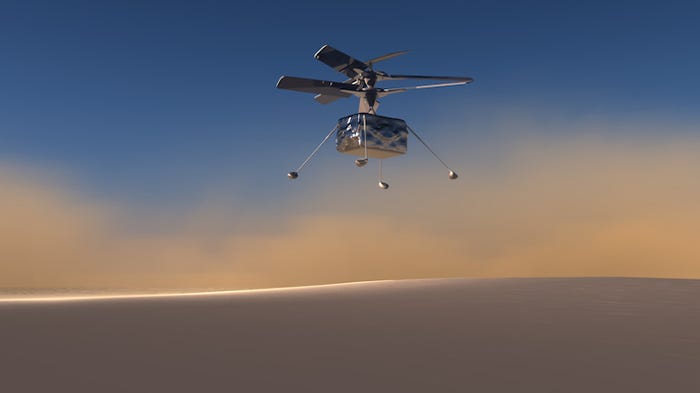
However, the trend lately is the use of greater varieties of motors, specialized depending on the application need. This includes bespoke constructions that rely on longer winds to provide more torque or fewer winds to provide more speed.
Jeremy Laliberte has also seen an increase in overall motor quality. "Better waterproofing, better operating temperatures, I noticed that more of the platforms are now pushing into being able to operate in the rain and sort of better protecting the motors and other electronics and things like that, and more consistency in terms of the quality," he says.
Laliberte said this is especially true for bigger motors for larger (25 kg and above) electric drones, thanks to growth in the EV and electric aviation fields.
But, Laliberte says, the biggest advancements here are actually in motor controllers, with drone makers adding advanced features like handling failed components. "Some of the drone makers have the ability to operate on three motors if you have one fail for some reason," he said. "So you have the kind of automated systems to kind of recover the aircraft, or at least get it on the ground."
Additionally, he says that the increasing availability of electric motor test stands are enabling the development of far more precise motor controls.
Power Sources
While solid-state batteries may provide drastic increases in energy density while also decreasing charge times, zinc-ion batteries may change the way drones are constructed, and hydrogen fuel cells may provide massive flight times and quick refueling, all these technologies are years away from mass adoption. For now, lithium-ion batteries are still the go-to.
Li-ion batteries are nothing new, yet drone flight times continue to increase thanks to ever-improving energy density of these cells along with other efficiency improvements.
"In terms of a modest size mapping project, you can now much more easily carry those out with a multi-rotor instead of having to resort to a fixed-wing drone," Dominique Chabot told us. "That said, you have fixed wings now that can fly for two hours."
The biggest improvements here, according to Jeremy Laliberte, have more to do with increasing battery sophistication and reliability.
"What we've noticed is a trend to batteries that are highly integrated. They're smart, so they have their own charge management systems, they do their own self-discharge for storage. Some of the products we fly, they have heaters built into the batteries for cold weather operations, you know, and improved packaging so they're more robust and durable," Laliberte said. "Most of the major commercial drone manufacturers have quite good integrated systems for sort of giving you all that information about how the batteries are doing. It's not like the old days, just a few years ago, where you would buy your packs at a hobby store and cross your fingers."
Laliberte attributed many of these improvements to increasing demand for advanced batteries in other industries: "As batteries get better for cars, we'll get better from that."
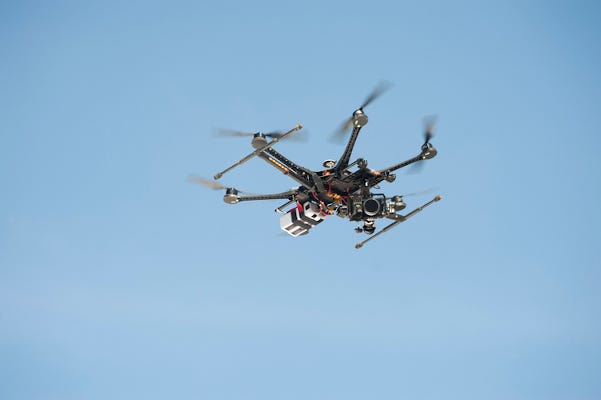
Materials and Construction
As the drone market continues to mature, Jeremy Laliberte sees an increasing sophistication in drone design that, at least in larger craft, will need to rely more heavily on traditional aviation materials, like higher-end composites and aviation-grade alloys.
"I think we'll kind of continue to see the smaller stuff really leading the way with some of the newer technologies," he said. "But the bigger drones, I think, will tend to gravitate to the traditional materials and manufacturing, because there's already all of that certification expertise and knowledge and approval mechanisms for those materials."
These approvals, he says, largely apply to drones greater than 25 kg in mass, at which point the testing and certification in most regions becomes more regimented.
For smaller drones, 3D printing is an increasingly valuable tool. Laliberte says that advanced additive manufacturing techniques mean the lifecycle of these parts has evolved past the prototyping phase. "So, not just mock-ups and demos, but actually parts that are going to go into service and see extended use," he says.
In the future, 4D printing may allow not only for custom-designed parts that provide a static function, but that can actually morph on demand. This could enable a next-generation of hybrid drones offering efficiencies closer to fixed-wing plus capabilities closer to multi-rotor.
However, when it comes to today's frame construction, injection-molded plastics remain common due to low weight and cost, while more structurally significant components continue to rely on carbon fiber due to its high strength, low weight, and low thermal expansion.
Payloads and Capabilities
Sensing, Imaging, and Processing
Imaging remains among the most popular applications for drone use, particularly among recreational, industrial, and research drones. Newer, larger digital sensors capture greater amounts of light at higher resolutions. This not only allows for higher-quality photos, but also provides greater room for software stabilization while still producing acceptably high-resolution output.
"Software, as we say, weighs nothing. So, you know, adding a few lines of code doesn't increase the weight of the aircraft," Jeremy Laliberte said.
Multispectral cameras offer the ability to capture at various wavelengths, but a new generation of hyperspectral cameras is allowing capture of even more information from a single sensor.
"So a regular run-of-the-mill camera, just a consumer camera, is a three-band camera. It has red, green, and blue, an RGB camera," Dominique Chabot said. "Typically, a multispectral camera will have a minimum of four bands, usually including a near-infrared band is kind of a minimum there ... And you'll have multispectral cameras up to maybe a dozen bands. But, at some point, there's so many bands that we start calling it a hyperspectral camera, and hyperspectral cameras, some of them are hundreds of bands, some of them are maybe as few as a couple-dozen."
Capturing more information means storing more data, and that requires a new level of image processing. Dominique Chabot calls this a "double-edged sword," with researchers often gathering more data than they can effectively parse. "And to go from this raw data to actionable information is a lot of work, always has been a lot of work on the processing and analysis side," he says.
This is a large portion of the sort of work he provides at droneMetrics, applying machine learning and other advanced techniques to finding trends and extracting meaningful information from large volumes of data. "I see that as kind of an extension of the whole drone phenomenon," he said, "because we've got an increasingly efficient platform to collect imagery, but we need to match that with efficient ways to analyze the imagery."
Improvements to machine learning and other aspects of artificial intelligence will be key in keeping up with the ever-increasing volume of data captured by these sensors.
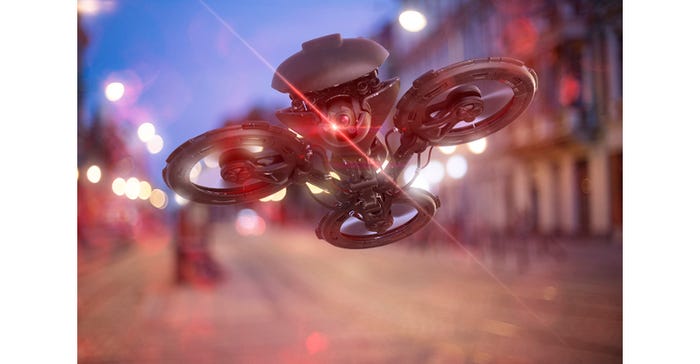
Surveying
As an extension of imaging, LIDAR is a popular application for survey and research drones, particularly on stable, multi-rotor units, enabling incredibly high-resolution 3D mapping of the drone's surroundings.
However, there's increasing interest in drone applications for synthetic aperture radar, or SAR, which relies on the motion of the platform itself to enable high-detail radar scanning of terrain through sensors that would otherwise only provide low-detail data. Typically used on satellites, SAR systems are being developed for drone use, like NASA's UAVSAR
Though far cheaper, deploying SAR on a drone poses a number of challenges. "Drones, because they're notoriously unstable compared to traditional aerial platforms like a satellite, [which] is very stable, obviously, just following an orbit around the Earth. You don't have to worry about turbulence and vibration," Dominique Chabot said.
Providing that stability requires a concert of systems and sensors, including gyros, accelerometers, and IMUs, all helping to correct the data from the sensors. "Because there's nothing you can do to make a drone more stable," Chabot said, "especially when it starts getting windy and gusty."
Sprayers and Hoppers
As flight times increase, drones can take advantage of larger-capacity hoppers and sprayer, like the aforementioned DJI AGRAS T40, which can run up to 40 kg of liquid for spraying for 50 kg of material for spreading. Use of either volume of payload, however, would result in the weight of the entire package exceeding 25 kg, which in many territories is the threshold that will require additional licensing.
While drone-based sprayers traditionally used flat-fan nozzles, rotary atomizers are increasingly used. This type of nozzle can be tuned to provide even droplet sizes and coverage even amidst uneven flow rates.
The Future: BVLOS and Autonomy
When it comes to applications like drone delivery or automated deployment of fertilizer or pesticides, development is focused on drones flying well outside of the sight of their operators.
"The big focus right now is on what they call beyond visual line of sight, or BVLOS applications," Jeremy Laliberte said. "And this is a global kind of push to get these regulations in place so that operators can, you know, operate drones well beyond the visual line of sight and even in some cases without direct human oversight for the entire flight, like maybe the drones are being monitored by someone a bit like an air traffic controller. But, they're not directly being flown by the operator unless needed."
This sort of operation requires more advanced onboard sensing and identification, operational systems that Laliberte tend to fit within two types. The first category is cooperational, enabling drones to operate and be tracked much more like traditional aircraft with traffic collision avoidance system (TCAS) sensors, including active transponders reporting information like position, speed, and heading.
The second category is non-cooperative, where drones do not actively report their position, much like a modern ultralight aircraft. "So, you need other ways of detecting them," Laliberte said. This includes optical and radar sensors. "Some of those are small enough to go on drones, some of them are not, so this is another area of active research and miniaturizing these systems, making them safe, demonstrating that they have the reliability to meet the regulatory standards."
Those standards themselves are continuing to mature, especially when it comes to drones intended for government and military applications. Concludes Maxon's Jeff Randall: "What the FAA doesn't want is drones falling out of the sky because the motor broke, because a wire bond was weak and it stopped working."
About the Author(s)
You May Also Like





